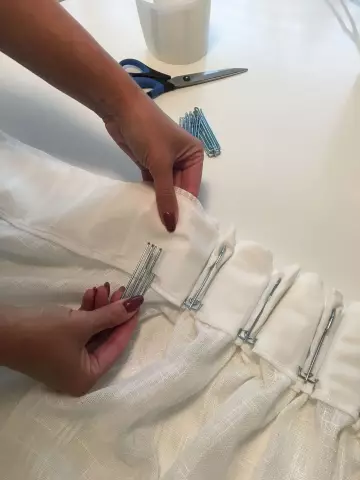"Pleated" and "corrugated" skirts are a rather popular trend in fashion, which from time to time comes back to square one. Pleated dresses and clothing items look irresistible both on children's products and on things for adults. But pleating can be done independently, even without the use of special solutions for better fixation.
It is necessary
fabric, ruler, chalk, centimeter, iron, needles, thread
Instructions
Step 1
How to make a pleated skirt? To do this, measure the circumference of the hips, waist and length of the product. To correctly calculate the amount of fabric, you need to focus on three hip girths. For example, the length of the product is 60 cm, the girth of the hips is 90 cm, therefore, there should be a panel with a total width of 270 cm + 4 cm for allowances.
Step 2
Measure pieces of fabric 60 cm each + 3 cm for hemming the edge of the product + 2 cm for allowances in the waist area, which means only 65 cm. If the width of the fabric is 145 cm, then it is enough to purchase two lengths, that is, 130 cm and cut it in half along the transverse threads. Sew the pieces of fabric so that only one side seam of the future skirt is formed so far. Overlock one end of the garment (bottom) with an overlock or zigzag stitch. Then fold it 3 cm, hem the entire fabric and iron it.
Step 3
Now make a line that you can use a crayon or a bar of soap (a sharpened remnant is great). If small pleating is supposed, then make markings along the entire panel in the form of parallel lines every centimeter. That is, how wide the folds will be, this width should be the distance between the lines. Be sure to pay attention to what you need to mark, starting with the already existing side seam. Otherwise, it may appear at the top in a conspicuous place.
Step 4
Starting in the middle, so that the side seam is inside, lay folds along the lines and immediately fix them with needles. After every 2-3 folds made, baste them with thread along the entire length. Thus, lay the entire product into the pleating. Then carefully fold and iron each fold through a damp cloth, both from the front and from the inside.
Step 5
Near the second side seam, correctly adjust the folds between each other, mark the seam itself and baste it, then sew on a typewriter and overcast. For this, the hem will have to be slightly trimmed or immediately leave a small piece unstitched. Now hem the open hem and press the side seam.
Step 6
Without unstitching the basting, even out all the folds and sew the top edge on a typewriter with a regular stitch so that they do not come apart. It is permissible to slightly plant the upper part, if necessary. It remains to sew a belt, the model of which is chosen at your discretion. After pleating, remove the basting from the entire garment and iron it again through a damp cloth on both sides. Pleats can be made with regular, bow (counter), double and triple pleats.






